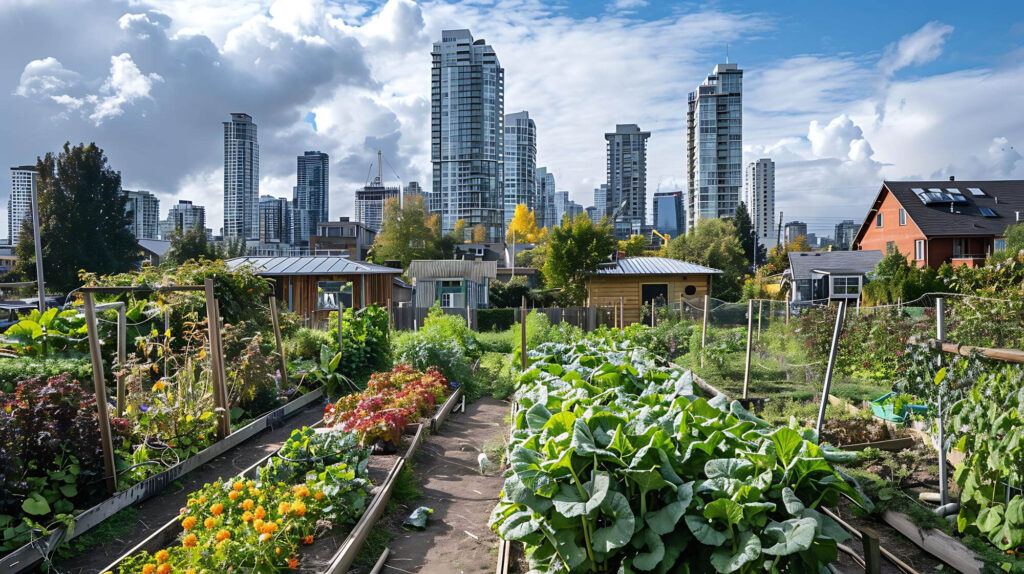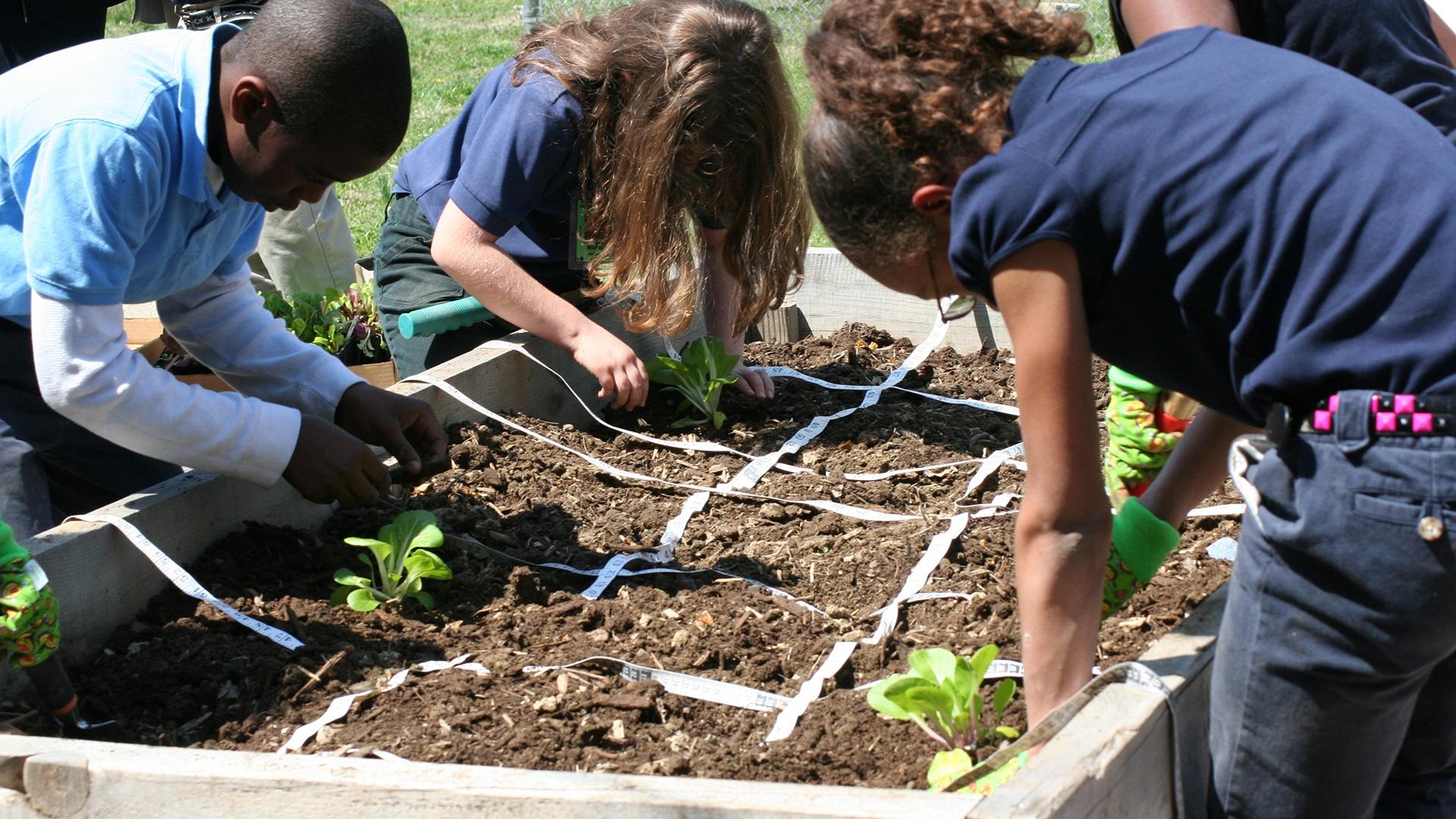
Introduction: Growing Greener in the Concrete Jungle
The world is changing, and with it, so are our cities. Urban areas, once symbols of concrete and steel, are slowly transforming into hubs of sustainability, resilience, and a newfound appreciation for nature. At the forefront of this transformation is sustainable urban agriculture (SUA), a practice that’s not just about growing food; it’s about building communities, improving public health, and fostering a deeper connection with the environment. This guide dives deep into the world of SUA planning, offering practical insights, innovative strategies, and a vision for a greener, more sustainable future.
Imagine a city where fresh, locally-grown produce is readily available, reducing the environmental impact of long-distance transportation. Picture neighborhoods where community gardens thrive, fostering social connections and providing educational opportunities. Envision rooftops transformed into flourishing farms, contributing to the city’s green infrastructure and mitigating the effects of climate change. This is the promise of sustainable urban agriculture, and it’s within our reach.
This article will serve as your comprehensive resource for understanding and implementing SUA planning. We’ll explore the key principles, best practices, and essential considerations for creating successful and impactful urban agriculture initiatives. Whether you’re a city planner, a community organizer, a gardening enthusiast, or simply someone passionate about building a more sustainable world, this guide is for you.
The Pillars of Sustainable Urban Agriculture Planning
Sustainable urban agriculture is more than just planting seeds in the city; it’s a holistic approach that considers environmental, social, and economic factors. Effective SUA planning rests on several key pillars:
- Environmental Sustainability: Minimizing environmental impact through practices like water conservation, waste reduction, and the use of organic methods.
- Social Equity: Ensuring access to fresh, healthy food for all residents, regardless of income or location, and promoting community engagement.
- Economic Viability: Creating opportunities for economic growth, job creation, and the development of local food systems.
- Resilience: Building food systems that are adaptable to climate change, economic fluctuations, and other challenges.
Let’s explore each of these pillars in more detail:
Environmental Sustainability: Nurturing the Earth in the City
The environmental benefits of SUA are numerous and far-reaching. By growing food locally, we can significantly reduce the carbon footprint associated with food transportation. This includes everything from the trucks and planes used to move food across the globe to the refrigeration required to keep it fresh. SUA also helps to conserve water, reduce waste, and improve soil health.
Here are some specific strategies for promoting environmental sustainability in SUA:
- Water Conservation: Implementing efficient irrigation systems, such as drip irrigation, and utilizing rainwater harvesting techniques.
- Waste Reduction: Composting food scraps and yard waste to create nutrient-rich soil amendments. Diverting food waste from landfills reduces methane emissions, a potent greenhouse gas.
- Soil Health: Using organic farming methods, such as cover cropping, crop rotation, and the application of compost, to improve soil fertility and reduce the need for synthetic fertilizers. Healthy soil is essential for plant growth and helps to sequester carbon from the atmosphere.
- Pest and Disease Management: Employing integrated pest management (IPM) strategies, which focus on preventing pest problems and using natural pest control methods when necessary. This reduces the reliance on harmful pesticides.
- Biodiversity: Planting a variety of crops and flowers to attract beneficial insects, pollinators, and other wildlife. This enhances the ecosystem and supports a healthy food web.
Social Equity: Food Justice for All
SUA plays a crucial role in promoting social equity by increasing access to fresh, healthy food, particularly in underserved communities. Food deserts, areas with limited access to affordable and nutritious food, are a significant problem in many urban areas. SUA can help to address this issue by providing opportunities for local food production and distribution.
Here are some ways to promote social equity in SUA:
- Community Gardens: Establishing community gardens in underserved neighborhoods to provide residents with access to land, resources, and educational opportunities.
- Urban Farms: Creating urban farms that employ local residents and sell produce at affordable prices.
- Food Banks and Pantries: Partnering with food banks and pantries to distribute surplus produce to those in need.
- Educational Programs: Offering workshops and training programs on gardening, cooking, and nutrition to empower residents to grow their own food and make healthy choices.
- Community Engagement: Involving community members in the planning and implementation of SUA projects to ensure that they meet the needs and priorities of the local population.
Economic Viability: Growing Opportunities
SUA can contribute to economic development by creating jobs, generating income, and supporting local businesses. Urban farms and gardens can sell their produce at farmers’ markets, restaurants, and grocery stores, providing a source of revenue for growers. Additionally, SUA can create jobs in areas such as landscaping, composting, and food processing.
Here are some strategies for promoting economic viability in SUA:
- Farmers’ Markets: Establishing farmers’ markets in urban areas to provide a venue for local growers to sell their produce.
- Community Supported Agriculture (CSA): Creating CSA programs that connect growers directly with consumers, providing a guaranteed market for their produce.
- Agri-tourism: Developing agri-tourism activities, such as farm tours and workshops, to generate additional income.
- Food Processing and Value-Added Products: Supporting the development of food processing facilities to create value-added products from locally-grown produce.
- Job Training and Employment Opportunities: Providing job training and employment opportunities in the fields of urban agriculture, landscaping, and food service.
Resilience: Adapting to Change
In an era of climate change, economic uncertainty, and supply chain disruptions, building resilient food systems is more important than ever. SUA can play a vital role in enhancing the resilience of our cities by diversifying food sources, reducing reliance on external inputs, and promoting local self-sufficiency.
Here are some ways to build resilience in SUA:
- Crop Diversification: Planting a variety of crops to reduce the risk of crop failure due to pests, diseases, or climate change.
- Water Management: Implementing water conservation strategies and developing alternative water sources, such as rainwater harvesting.
- Seed Saving: Saving seeds from your own crops to reduce reliance on commercial seed companies and preserve local varieties.
- Local Food Networks: Building strong relationships with local farmers, food processors, and distributors to create a more resilient food system.
- Community Preparedness: Developing community preparedness plans to ensure that residents have access to food and other essential resources in the event of a crisis.
Planning and Implementation: From Vision to Reality
Effective SUA planning requires a strategic approach that considers the unique characteristics of each urban environment. This involves assessing local needs, identifying suitable sites, engaging stakeholders, and developing a comprehensive plan.
Step 1: Assessing Local Needs and Opportunities
The first step in SUA planning is to assess the needs and opportunities in the community. This involves gathering data on food access, food security, and community interest in urban agriculture. You should also identify existing resources, such as vacant land, community gardens, and local organizations that can support SUA initiatives.
Here are some key questions to consider:
- What are the food access challenges in the community?
- What are the most pressing food security needs?
- What types of urban agriculture are most suitable for the local climate and environment?
- What resources are available to support SUA initiatives?
- What is the level of community interest in urban agriculture?
Conducting surveys, holding community meetings, and partnering with local organizations can help you gather the information you need to develop a successful SUA plan.
Step 2: Site Selection and Assessment
Choosing the right site is crucial for the success of any SUA project. Consider factors such as soil quality, access to water and sunlight, zoning regulations, and proximity to residents. Conducting a thorough site assessment will help you identify potential challenges and opportunities.
Here are some factors to consider when selecting a site:
- Soil Quality: Test the soil for contaminants and amend it as needed.
- Sunlight: Ensure that the site receives adequate sunlight for crop production.
- Water Access: Assess the availability of water for irrigation.
- Zoning Regulations: Review local zoning ordinances to determine if urban agriculture is permitted.
- Accessibility: Consider the site’s accessibility for residents and volunteers.
- Proximity to Residents: Choose a site that is easily accessible to the community.
Step 3: Stakeholder Engagement and Collaboration
SUA planning should be a collaborative process that involves input from a variety of stakeholders, including residents, community organizations, local businesses, and government agencies. Engaging stakeholders from the outset will help to ensure that the SUA plan meets the needs and priorities of the community.
Here are some ways to engage stakeholders:
- Community Meetings: Hold regular community meetings to discuss the SUA plan and gather feedback.
- Surveys: Conduct surveys to assess community interest and gather information on needs and preferences.
- Focus Groups: Organize focus groups to gather in-depth information from specific segments of the community.
- Partnerships: Partner with local organizations, businesses, and government agencies to leverage resources and expertise.
- Public Events: Host public events to raise awareness about SUA and engage the community.
Step 4: Developing a Comprehensive SUA Plan
Once you have assessed local needs, selected a site, and engaged stakeholders, it’s time to develop a comprehensive SUA plan. The plan should outline the goals, objectives, strategies, and activities for your SUA project. It should also include a budget, timeline, and evaluation plan.
Here are some key elements to include in your SUA plan:
- Goals and Objectives: Clearly define the goals and objectives of your SUA project.
- Strategies: Outline the strategies you will use to achieve your goals and objectives.
- Activities: Describe the specific activities that will be undertaken.
- Budget: Develop a detailed budget that includes all anticipated expenses.
- Timeline: Create a timeline for implementing the SUA plan.
- Evaluation Plan: Develop a plan for evaluating the success of the SUA project.
- Management Structure: Define the roles and responsibilities of individuals and organizations involved in the project.
Step 5: Implementation and Monitoring
With a solid plan in place, the next step is to implement your SUA project. This involves securing funding, obtaining permits, preparing the site, and planting crops. Once the project is underway, it’s important to monitor progress and make adjustments as needed.
Here are some key activities for implementation and monitoring:
- Securing Funding: Identify and secure funding sources, such as grants, donations, and sponsorships.
- Obtaining Permits: Obtain all necessary permits and approvals.
- Site Preparation: Prepare the site for planting, including soil testing, amendment, and irrigation installation.
- Planting and Maintenance: Plant crops and provide ongoing maintenance, such as watering, weeding, and pest control.
- Monitoring Progress: Track progress against the goals and objectives of the SUA plan.
- Evaluation: Evaluate the success of the SUA project and make adjustments as needed.
Types of Sustainable Urban Agriculture
Urban agriculture encompasses a diverse range of practices, each with its own unique characteristics and benefits. Here are some of the most common types:
- Community Gardens: Shared spaces where individuals can grow their own food, fostering community engagement and providing access to fresh produce.
- School Gardens: Educational gardens that teach children about food production, nutrition, and environmental stewardship.
- Rooftop Farms: Gardens located on rooftops, utilizing otherwise unused space to grow crops and contribute to green infrastructure.
- Vertical Farms: Indoor farming systems that use vertical structures to maximize space and grow crops in a controlled environment.
- Hydroponics and Aquaponics: Soilless growing methods that use water to deliver nutrients to plants, often allowing for higher yields and reduced water usage.
- Urban Farms: Commercial-scale farms located within urban areas, providing fresh produce to local markets and restaurants.
- Edible Landscaping: Integrating edible plants into residential and public landscapes, creating a more sustainable and aesthetically pleasing environment.
The best type of SUA for a particular community will depend on a variety of factors, including available space, resources, and community needs.
Overcoming Challenges in Sustainable Urban Agriculture
While SUA offers numerous benefits, it’s not without its challenges. Planning and implementing successful SUA projects requires careful consideration of potential obstacles and the development of strategies to overcome them.
Common Challenges:
- Land Availability: Competition for land in urban areas can be fierce. Securing suitable sites can be challenging.
- Soil Contamination: Urban soils may be contaminated with heavy metals or other pollutants.
- Water Access: Access to water for irrigation can be limited and expensive.
- Zoning Regulations: Zoning ordinances may restrict or prohibit urban agriculture activities.
- Pest and Disease Management: Managing pests and diseases in an urban environment can be challenging.
- Funding: Securing funding for SUA projects can be difficult.
- Community Engagement: Engaging the community and building support for SUA initiatives can take time and effort.
Strategies for Overcoming Challenges:
- Advocacy: Advocate for policies that support urban agriculture, such as zoning changes and funding opportunities.
- Site Remediation: Test soil for contaminants and implement remediation strategies as needed.
- Water Conservation: Implement water conservation strategies, such as rainwater harvesting and efficient irrigation systems.
- Community Partnerships: Build partnerships with local organizations, businesses, and government agencies to leverage resources and expertise.
- Education and Outreach: Educate the community about the benefits of SUA and build support for local projects.
- Funding Diversification: Explore a variety of funding sources, such as grants, donations, and crowdfunding.
- Creative Solutions: Explore innovative solutions, such as rooftop farms, vertical farms, and hydroponic systems, to address land constraints.
The Future of Urban Agriculture: A Vision for Tomorrow
Sustainable urban agriculture is not just a trend; it’s a movement. As our cities continue to grow and evolve, SUA will become increasingly important for ensuring food security, promoting environmental sustainability, and building resilient communities. The future of urban agriculture is bright, and it holds the potential to transform our cities into vibrant, green spaces where people and nature thrive together.
Here are some trends and innovations that are shaping the future of SUA:
- Technological Advancements: The use of technology, such as vertical farming, hydroponics, and precision agriculture, is increasing efficiency and productivity.
- Integration with Green Infrastructure: SUA is increasingly being integrated with green infrastructure initiatives, such as green roofs, green walls, and urban forests.
- Community-Based Food Systems: There is a growing movement towards building community-based food systems that prioritize local food production, distribution, and consumption.
- Policy Support: Governments are increasingly recognizing the importance of SUA and are implementing policies to support its development.
- Education and Training: Educational programs and training opportunities are expanding to meet the growing demand for skilled urban farmers and gardeners.
By embracing these trends and innovations, we can create a future where urban agriculture is an integral part of our cities, contributing to a more sustainable, equitable, and resilient world.
Conclusion: Planting the Seeds of Change
Sustainable urban agriculture planning is a complex but rewarding endeavor. By understanding the key principles, best practices, and essential considerations, you can contribute to creating a greener, healthier, and more vibrant future for your community. Whether you’re a seasoned urban farmer or just starting to explore the possibilities of growing food in the city, remember that every seed planted is a step towards a more sustainable world.
This journey is a call to action. Take the knowledge you’ve gained and start planting those seeds of change. Support local urban agriculture initiatives, advocate for policies that promote sustainability, and share your passion for growing food with others. Together, we can cultivate a brighter future, one garden, one farm, one city at a time.
The time to act is now. Let’s cultivate a future where our cities are not just places to live, but places where we thrive, connected to the earth and to each other.


